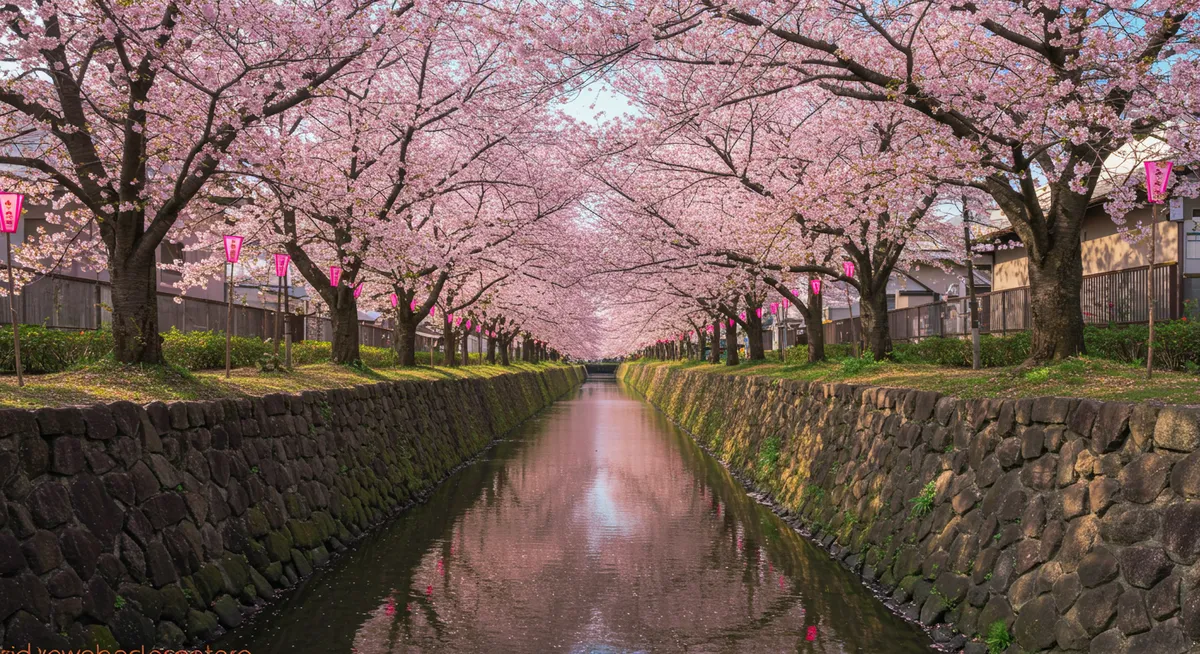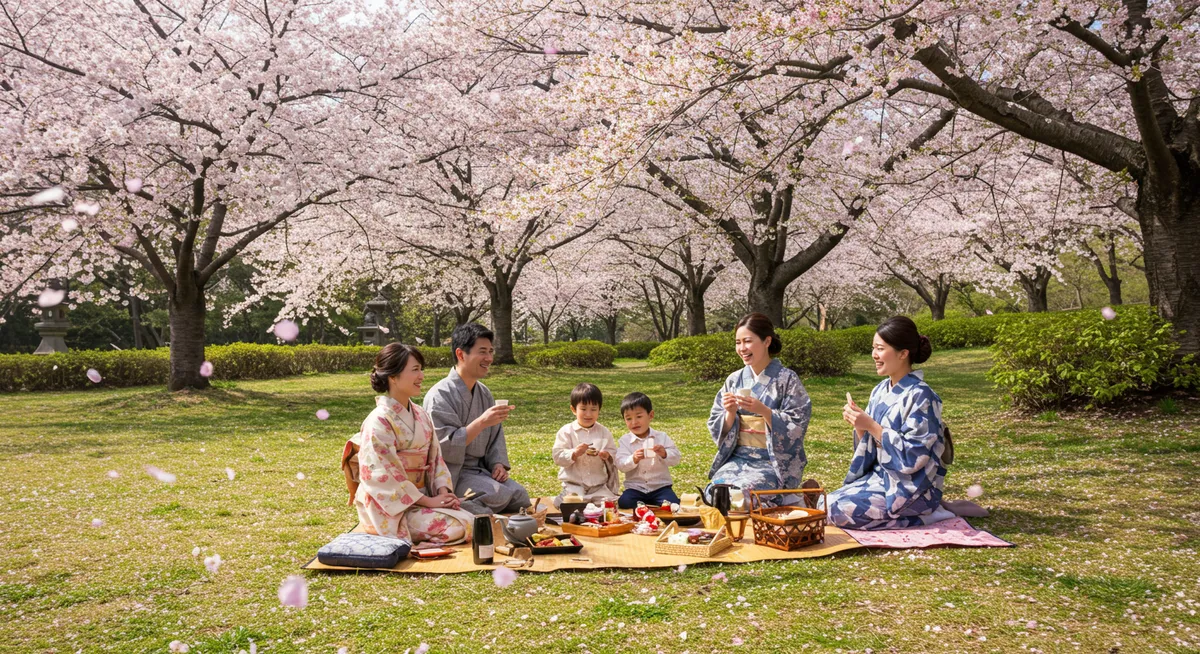Japan's Hidden Cherry Blossom Walking Routes: Beyond the Famous Parks

Japan's Hidden Cherry Blossom Walking Routes: Beyond the Famous Parks
Japan's cherry blossom (sakura) season represents one of the world's most breathtaking natural phenomena, attracting millions of visitors annually. While iconic locations like Tokyo's Ueno Park and Kyoto's Philosopher's Path deservedly capture attention, Japan offers numerous lesser-known cherry blossom walking routes that provide equally magical experiences with fewer crowds. This guide reveals hidden hanami (flower viewing) walking paths where tunnels of pink blooms create unforgettable spring adventures.

Why Seek Out Hidden Cherry Blossom Walks?
While Japan's famous cherry blossom destinations offer spectacular views, venturing beyond these hotspots provides several advantages:
- Authentic Cultural Experience: Witness how local Japanese communities celebrate hanami away from international tourism centers
- Photographic Opportunities: Capture stunning images without crowds of people in every frame
- Peaceful Contemplation: Experience the traditional meditative aspect of hanami that can be lost in busier locations
- Extended Viewing Season: Different regions and elevations have varying bloom times, allowing you to extend your cherry blossom experience
- Supporting Rural Communities: Bring tourism benefits to lesser-visited areas of Japan
Northern Japan's Hidden Cherry Walks
Hirosaki Castle Park's Outer Walking Paths
While Hirosaki Castle in Aomori Prefecture is a well-known cherry blossom destination, few visitors explore the network of walking paths that extend beyond the main castle grounds. These interconnected trails follow ancient castle moats lined with over 2,600 cherry trees, creating pink tunnels that reflect beautifully in the water below. The western outer path particularly offers a 2-kilometer stretch where you'll encounter primarily local visitors.
Blooming typically occurs in late April to early May, about two weeks later than Tokyo, making it perfect for extending your cherry blossom season. The Sakura Tunnel, a 400-meter stretch where branches form a complete canopy overhead, offers one of Japan's most photogenic spring walks.
Kakunodate Samurai District Cherry Path
Kakunodate in Akita Prefecture, often called "Little Kyoto of the North," features two distinct cherry blossom walking experiences. While most visitors concentrate on the weeping cherry trees (shidarezakura) in the main samurai district, a 2-kilometer riverside path lined with centuries-old cherry trees remains relatively undiscovered. This path follows the Hinokinai River, creating a stunning contrast between pink blossoms, traditional samurai residences, and flowing water.
Dating to 1656 when the trees were planted, this historic path offers both natural beauty and cultural significance. Local guides explain that these trees survived through multiple periods of Japanese history and hold special meaning for the community, stories rarely shared in more touristy locations.
Central Japan's Secret Cherry Blossom Routes
Nakasendo Way Cherry Sections
The historic Nakasendo Way connected Tokyo and Kyoto during the Edo period. Today, preserved sections of this ancient highway offer spectacular cherry blossom walks, particularly between the post towns of Magome and Tsumago. This 8-kilometer trail features stretches where cherry trees line both sides of the stone path, creating a pink canopy over the historical route.
Walking this section in spring connects you with centuries of Japanese history while providing stunning views of rural Japan awakening with cherry blossoms. The restored traditional buildings and lack of modern development create an atmosphere that transports you back in time, offering a glimpse of how cherry blossoms were experienced by travelers centuries ago.
Izu Peninsula Coastal Cherry Walk
The Jogasaki Coast on the Izu Peninsula offers a unique combination rarely found elsewhere: blooming cherry trees alongside dramatic ocean views. A 10-kilometer coastal walking path features sections where cherry trees grow almost horizontally from volcanic cliffs, creating unusual viewing angles as blossoms frame the Pacific Ocean below.
This walk combines the ephemerality of cherry blossoms with the eternal rhythm of ocean waves, creating a meditative experience prized by Japanese nature poets. The trail features several suspension bridges that provide breathtaking viewpoints where ocean, sky, and cherry blossoms merge in a uniquely Japanese spring landscape.
Southern Japan's Undiscovered Blossom Trails
Nara's Ancient Mountain Cherry Route
While visitors flock to Nara Park, few discover the historic walking path on nearby Mount Kasuga that features Japan's wild mountain cherry trees (yamazakura). These trees, with their distinctive character and deeper pink blooms, line a 5-kilometer trail that was once used exclusively by priests accessing the sacred mountain. Today, it offers a spiritual hanami experience, with stone lanterns periodically emerging among the cherry trees.
The mountain cherries here bloom slightly later than the common somei yoshino variety, typically reaching peak bloom in mid-April. Local conservation efforts have preserved this strain of cherry that more closely resembles the trees celebrated in Japan's oldest poetry collections from the 8th century.
Kyushu's Volcanic Cherry Line
The active volcano Mt. Aso on Kyushu island provides one of Japan's most dramatic backdrops for cherry blossom viewing. A circular walking route around portions of the caldera features cherry trees that contrast vividly with the volcanic landscape. This 7-kilometer path remains largely undiscovered by international tourists despite offering some of Japan's most unique spring photography opportunities.
The higher elevation means these cherry trees bloom later than lowland varieties, typically reaching their peak in mid to late April. The black volcanic soil provides nutrients that locals claim give these cherry trees particularly vibrant colors and longevity of blooms.
Planning Your Hidden Cherry Blossom Walk Experience
Optimal Timing Strategies
Cherry blossom forecasts are released annually in Japan, but less famous locations often receive less detailed predictions. Generally, blooms progress from south to north, with Kyushu seeing first blooms in late March and northern regions peaking in late April or early May. For hidden locations, contact local tourism offices for the most accurate bloom predictions.
Consider planning a north-to-south or mountain-to-lowland itinerary to maximize your chances of hitting peak bloom. Leave flexibility in your schedule to adjust plans based on current bloom reports, which are updated daily during the season.
Transportation and Access Tips
Many hidden cherry blossom routes require more planning to access than famous spots. Research local bus schedules, which may have increased frequency during cherry blossom season. Consider renting bicycles where available for greater flexibility in exploring rural cherry blossom areas.
Japan's excellent train system can bring you close to most hidden cherry walks, though final access may require local buses or taxis. A Japan Rail Pass remains valuable for exploring multiple cherry blossom regions.
Cultural Considerations for Less-Visited Areas
In rural cherry blossom locations, English signage may be limited. Basic Japanese phrases and a translation app will enhance your experience. Rural communities deeply appreciate visitors who participate respectfully in local hanami customs, such as proper garbage disposal and quiet appreciation of the blossoms.
Many hidden cherry walks pass through areas where the trees hold special cultural or religious significance. Research local customs before visiting, and be particularly careful not to damage branches or pick blossoms, which is considered disrespectful.
Connecting with Local Cherry Blossom Culture
Seeking out hidden cherry blossom routes offers opportunities to experience authentic Japanese hanami culture. In less touristy areas, you may be invited to join local hanami gatherings, where communities share food and sake under the blooming trees. These spontaneous cultural exchanges often become travelers' most cherished memories.
Look for small seasonal shops that appear along cherry walks during bloom season, offering regional sakura-themed foods and crafts. These temporary stalls (yatai) provide authentic seasonal specialties rarely found in more commercial tourist areas.

Photography Tips for Cherry Blossom Walks
Hidden cherry walks offer superior photography opportunities without the crowds. Early morning visits provide the best light and atmospheric conditions, often including misty backgrounds that enhance the dreamlike quality of cherry blossom tunnels. Capture the interplay of light through the blossoms, particularly during "magical hour" shortly after sunrise or before sunset.
Beyond traditional landscape shots, focus on details that tell a deeper story: centuries-old bark contrasting with fresh blooms, petals floating on water surfaces, or the juxtaposition of blossoms against traditional Japanese architectural elements found along walking routes.
Preserving Japan's Cherry Blossom Heritage
Many hidden cherry walk locations involve community conservation efforts to preserve historic or rare cherry varieties. Some walks feature information about these preservation efforts, and visitors can sometimes contribute to local cherry tree planting and maintenance programs.
Practice responsible tourism by staying on designated paths, which is particularly important during cherry blossom season when soil around trees can be compacted by visitors, potentially harming the trees' root systems.
Discover More Spring Nature Walks
Japan's cherry blossom walks represent just one of the world's spectacular spring natural phenomena.
Explore our complete guide to Spring Nature Walks Around the World to discover more breathtaking seasonal trails.